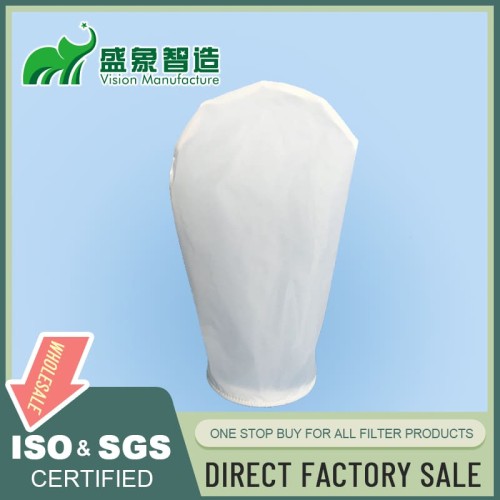
250 Micron Filter Bags Boost Industrial Filtration Efficiency
I. Introduction
In the vast landscape of industrial processes, effective filtration plays a pivotal role in maintaining system efficiency and product quality. This introduction delves into the significance of micron ratings in filtration, with a specific focus on the role and advantages of 250 micron filter bags in various industrial applications.
II. Understanding 250 Micron Filtration
A 250 micron filter bag is designed to capture particles that are 250 micrometers in diameter, offering a balance between fine and coarse filtration. This section will:
- Define the 250 Micron Rating: Clarify what this measurement means in terms of particle size.
- Particle Size Perspective: Discuss the types of particles typically targeted by this filtration grade.
- Filtration Efficiency at 250 Micron Level: Evaluate how effectively these bags can purify liquids and gases.
III. Types of 250 Micron Filter Bags
The versatility of 250 micron filter bags is reflected in their various constructions:
- Material Options: Including polypropylene, polyester, and nylon, each suited to different environments.
- Construction Methods: Ranging from sewn to welded, affecting durability and performance.
- Size and Shape Variations: Customizable to fit specific machinery and applications.
IV. Applications Across Industries
These filter bags are integral to numerous sectors due to their robust filtering capabilities:
- Water and Wastewater Treatment: Essential for removing contaminants and safeguarding water quality.
- Chemical Processing: Used to filter out impurities that can affect product quality.
- Food and Beverage Production: Ensures the clarity and purity of consumables during manufacturing.
- Oil and Gas Industry: Filters out impurities that can damage equipment and reduce efficiency.
- Paint and Coatings Manufacturing: Captures aggregates and particulates to ensure smooth finishes.
- Agricultural Irrigation Systems: Helps in the management of water quality for irrigation purposes.
V. Key Benefits and Features
The benefits of using 250 micron filter bags include:
- High Flow Rates: Allows for the efficient processing of large volumes of fluid.
- Good Dirt-Holding Capacity: Can accumulate substantial amounts of particulate matter before requiring cleaning or replacement.
- Extended Service Life: Durable materials and construction extend the operational lifespan.
- Cost-effectiveness: Offers a good balance between performance and expense.
- Versatility Across Applications: Suitable for a wide range of applications due to their robust design.
VI. Material Considerations
Selecting the right material for 250 micron filter bags involves understanding:
- Chemical Compatibility: Ensuring the material is suitable for the specific chemicals in the process.
- Temperature Resistance: Choosing materials that can withstand the operational temperature range.
- Durability and Strength: Ensuring the bags can handle the physical demands of the application.
- Environmental Impact: Considering the ecological footprint of the material used.
VII. Selection Criteria
Choosing the appropriate filter bag involves:
- Process Requirements: Matching the bag’s capabilities with the system’s needs.
- Fluid Characteristics: Understanding the chemical and physical properties of the fluid being filtered.
- Operating Conditions: Considering factors like flow rate, pressure, and temperature.
- Regulatory Compliance: Ensuring the filtration process meets all relevant industry standards.
VIII. Installation and Maintenance
Effective installation and regular maintenance are crucial for maximizing the performance of 250 micron filter bags:
- Proper Installation Techniques: Ensuring correct fitting to prevent bypass and ensure efficiency.
- Monitoring and Replacement Guidelines: Regular checks to determine when replacements are needed.
- Cleaning and Reuse Considerations: Guidelines for maintaining bag condition and extending service life.
- Troubleshooting Common Issues: Addressing typical problems that may arise during operation.
IX. Comparative Analysis
Understanding when to use 250 micron filtration versus other ratings involves:
- Comparison with Finer Filtration: Such as 100 or 150 microns, which may be necessary for more critical applications.
- Advantages Over Coarser Screens: Assessing the benefits of more precise particle removal compared to larger micron ratings.
- Cost-Benefit Analysis: Evaluating the economic impacts of using 250 micron bags versus other filtration methods.
X. Environmental Impact
The sustainability of using 250 micron filter bags is underscored by:
- Material Recyclability: Promoting the use of materials that can be recycled to minimize environmental impact.
- Energy Efficiency: Enhancing the energy efficiency of filtration processes.
- Waste Reduction Strategies: Implementing measures to reduce waste in filtration operations.
XI. Case Studies
Real-world applications demonstrate the effectiveness of 250 micron filter bags in various industries, showcasing their ability to solve complex filtration challenges and deliver significant improvements in performance and operational efficiency.
XII. Future Trends
Emerging technologies and trends are set to further enhance the capabilities of 250 micron filter bags:
- Advanced Materials: Enhancements that improve durability and filtration efficiency.
- Smart Filtration Solutions: Integration with sensors to monitor performance and predict maintenance needs.
XIII. Conclusion
250 micron filter bags are essential for maintaining high standards in industrial filtration, offering a practical solution that balances efficiency with flow rate management. As industries continue to seek robust and cost-effective filtration solutions, these bags stand out as a preferred choice. For further exploration of how these innovative solutions can optimize your processes, consider reaching out for expert consultation.
Leave a comment

